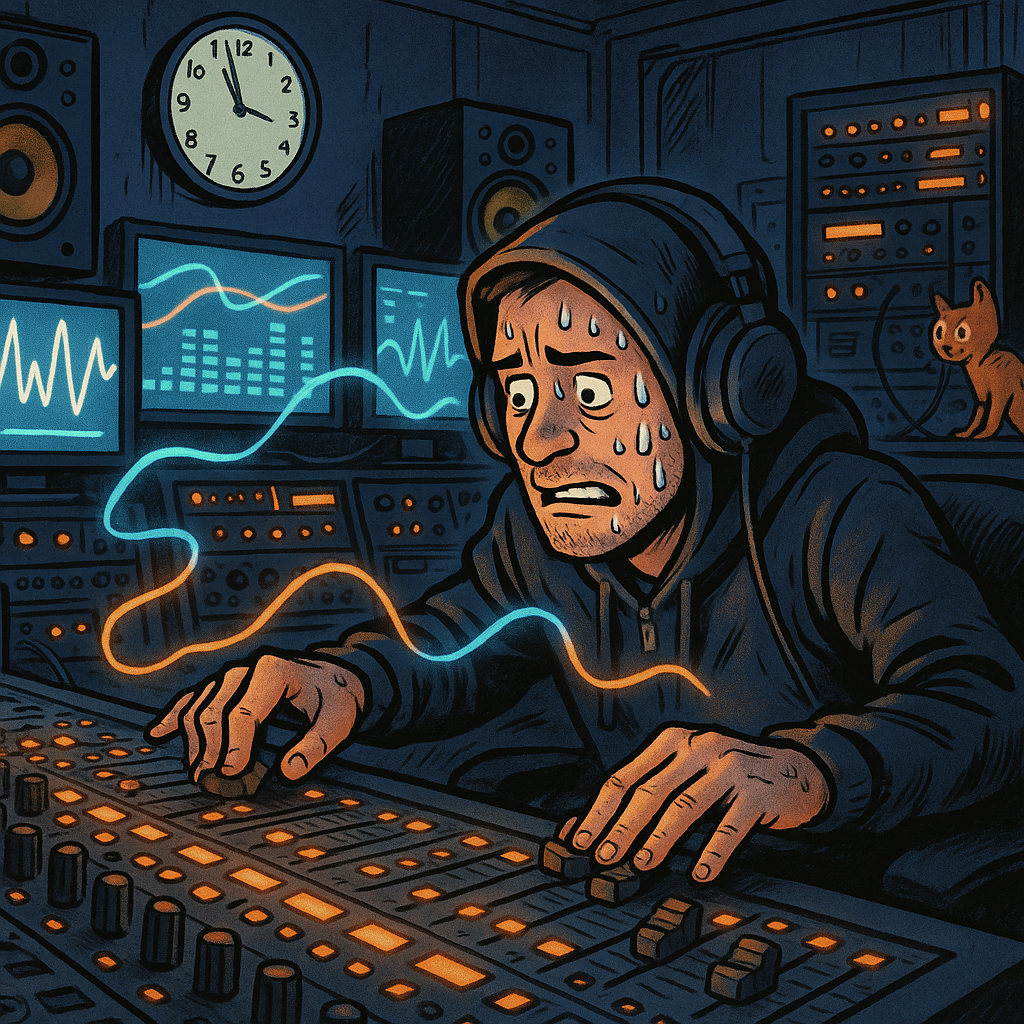If you’re a creative professional—whether you’re a sound designer, filmmaker, marketer, or artist—you’ve probably struggled with pricing your services. Maybe you’ve been scraping by, feeling like you’re constantly working but never getting ahead. Maybe you’re afraid that if you charge more, clients will leave.
But here’s the truth: Charging more isn’t just about making more money. It’s about improving your creativity, reducing stress, and building a sustainable career.
If you’ve ever felt overworked, undervalued, or burned out, this is for you.
The Cost of Undercharging
Many creatives set their rates too low out of fear—fear of losing clients, fear of being seen as “too expensive,” fear of missing out on work. But undercharging doesn’t just hurt your wallet—it hurts your work and your well-being.
Here’s why:
1. Low Rates Lead to High Stress
When you charge too little, you’re constantly scrambling for the next gig. Instead of focusing on doing your best work, you’re just trying to get through the project and move on to the next one.
Think about it—if you’re stressed about paying rent, how can you give your clients your full creative energy?
2. Cheap Clients Are the Neediest Clients
There’s a pattern in creative work:
The clients who pay less tend to be the ones with endless revisions, unreasonable expectations, and last-minute requests.
The clients who pay more expect you to be a professional—and treat you like one.
Would you rather work with someone who nitpicks every detail or someone who trusts your expertise and pays you what you’re worth?
3. Your Pricing Shapes How Clients See You
When you charge low rates, clients don’t see you as a creative professional—they see you as a technician, a button pusher, a replaceable part of the process.
But when you charge premium rates, you position yourself as an artist, an expert, and a leader in your field.
Which one do you want to be?
What Happens When You Charge More?
Raising your rates isn’t just about money—it’s about freedom.
Imagine if your rate was 10x what it is today.
How much more creative freedom would you have?
How much more time could you take to refine your work?
How much less stress would you feel about bills, vacations, or taking a break?
Higher rates give you space—to think, to create, and to truly bring your best work forward.
And if your current clients can’t afford you? That’s okay.
There are more clients out there. In fact, higher-paying clients are often easier to work with because they value your expertise and respect your time.
The Clients That Never End: Why Contracts Matter
Let’s talk about a nightmare scenario:
A few years ago, I took on a low-budget project. It seemed straightforward at first, but soon, the client kept coming back with more requests. And not just reasonable fixes—things that no one in the world would notice except them.
The worst part? They never budgeted correctly for other services—like hiring a composer—so now their project was way behind schedule, and they expected me to keep working for free.
This is why contracts matter.
Get everything in writing.
Clearly outline what’s included and what isn’t.
Make sure extra work is paid for—not just expected.
A contract protects you. Without one, you’re at the mercy of clients who don’t respect your time.
How to Raise Your Rates—Without Losing Clients
If you’re ready to charge more, here’s how to do it:
1. Set Your New Rate—And Own It
Decide what you really need to charge to have a sustainable career. If you’re unsure, research industry standards and set a number that feels both realistic and bold.
2. Communicate Your Value
Clients aren’t just paying for your time—they’re paying for your expertise, creativity, and results. Be clear about what makes your work worth the investment.
3. Start with New Clients
If you’re nervous about raising rates with existing clients, test your new rates on new clients first. You might be surprised how many say “yes” without hesitation.
4. Enforce Boundaries and Contracts
Clearly outline what’s included in your work—and what isn’t. Charge for extra revisions, rush jobs, and scope changes.
5. Trust That the Right Clients Will Find You
Some clients might leave when you raise your rates. That’s okay.
Higher prices attract better clients. Clients who respect your work, value your time, and want you for your expertise—not just because you’re cheap.
Final Thoughts: You Deserve More
It’s time to stop selling yourself short.
You are a professional.
You create valuable work.
You deserve to be paid accordingly.
If you charge more and some clients leave? Good. That just makes room for better clients, bigger opportunities, and a healthier, happier creative career.
Now go out there and raise your rates.







